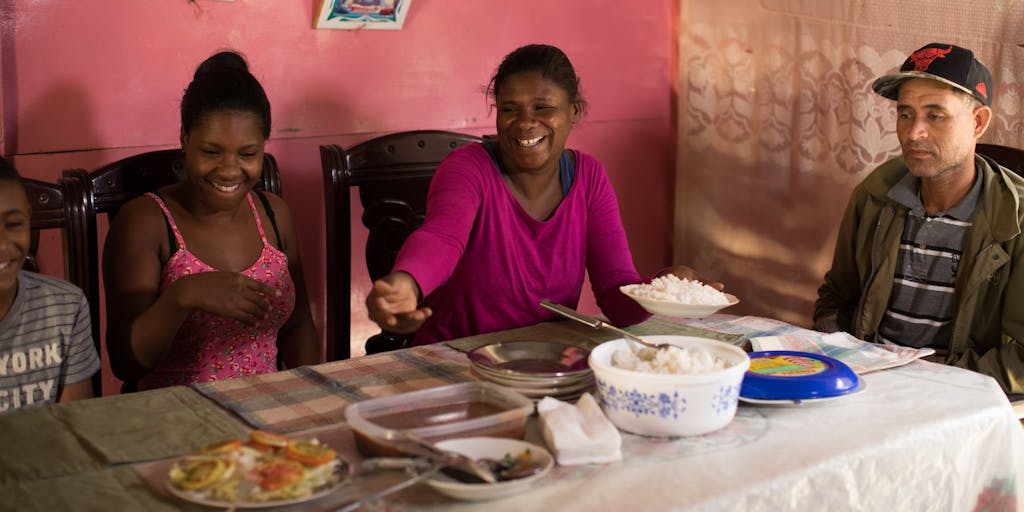Around the world, families come together for meals at the dinner table. Maybe your family has dinner together every night. Or maybe you gather with your greater family once a week for Sunday night dinners. Whatever your routine is, it’s likely that you have some good memories of being together at the dinner table.
Your support of Food for the Hungry (FH) through child sponsorship, giving to 22x match, or donating to other causes, is helping families around the world to do the same: enjoying dinner together.
It might start with farm tools, seeds, and training so meals include more nutritious foods. Or it may include providing small livestock, so families can raise their incomes and stop skipping meals. Your generosity is providing opportunities for families to improve their lives and come together for meals at the dinner table.
We’ve created this photo collection to celebrate the different types of dinner tables and ways families enjoy meals together.
Kenya: Ntisia and Her Children Enjoy a Meal of Moringa and Ugali

Ntisia’s children are eating a dish of moringa and ugali. Moringa is a tree with leaves and seed pods containing protein and other nutrients. It has many health benefits, and is an affordable source of protein for families. Ugali is a maize porridge. It is cooked in boiling water until it thickens to a dough-like consistency. As a part of FH’s programs, the women in their village have learned vital information about nutrition. Now, mothers are growing and harvesting from the moringa trees so their children can have a more protein rich diet.
Cambodia: Proek and His Family Enjoy Eggs from Their Chickens

Eggs from the family’s chickens are the main part of their meal. Proek, the father, has participated in many trainings put on by FH. He has improved his chicken raising practices. One way he’s done so is by building a better chicken coop. Their chickens provide food for their meals as well as additional income for the family.
Peru: Moises Helping his Mom Cook Dinner

Moises is helping his mother prepare a meal. In Peru, it is common for older children to help. Kids are often responsible for tasks like peeling potatoes, carrots, and garlic.
Uganda: Ayen Cooking for Children in a Refugee Settlement

At the time this photo was taken, Ayen, a mother and widow, temporarily lived with her seven children in a refugee settlement in Uganda. They are South Sudanese refugees and were waiting in the settlement until they could settle on a plot of land somewhere. Dinner time is families coming together, standing and sitting, and eating a modest meal. It can be a struggle for families to maintain life together in the chaos of refugee camps but Ayen was trying.
Dominican Republic: Angel and His Uncle Preparing Vegetables from Their Garden

Angel is a young boy who lives with his uncle. FH helped Angel start his own garden where he grows a variety of vegetables. His garden produces so much that there is more produce than he and his uncle can eat. He shares these extras with friends and neighbors. In addition to learning gardening skills, Angel also learned how to best prepare the vegetables he grew.
Nicaragua: Sponsored Children Eating at School

In Nicaragua, FH programs focus on improving both nutrition and education for children. Here, children are eating a healthy meal that their mothers learned to cook. In some schools, children will eat a daily midday meal that helps them concentrate on their studies and stay healthy. Mothers in the community may take turns preparing and serving the meals at school.
Hopefully you feel closer to these families from around the world as you get a glimpse of what their dinner tables look like. And as you sit down for dinner tonight, may you think of the children and families all around the world who you are supporting through FH.
Keep Reading:
Amalia’s Story Update: New Mother Reflects on the Impact of Child Sponsorship



